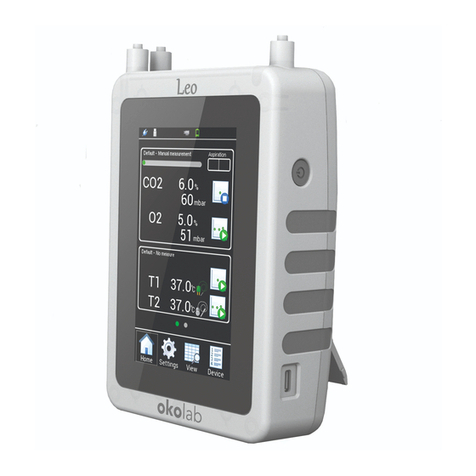Index
1SYMBOL DESCRIPTION ..........................................................................................................................................................1
1.1 SYMBOLS USED IN THIS MANUAL AND ON THE PRODUCT ......................................................................................................................1
1.2 SYMBOLS ON THE PRODUCT LABEL ...........................................................................................................................................................1
2SAFETY NOTES..........................................................................................................................................................................2
3REGULATORY COMPLIANCE ................................................................................................................................................3
3.1 REGULATORY STATEMENT.........................................................................................................................................................................3
3.2 WASTE ELECTRICAL AND ELECTRONIC EQUIPMENT DIRECTIVE (WEEE DIRECTIVE)..................................................................3
4PREFACE .....................................................................................................................................................................................4
4.1 SENSOR MODULES.......................................................................................................................................................................................5
5SUPPLIED EQUIPMENT..........................................................................................................................................................6
5.1 POWER SUPPLY............................................................................................................................................................................................7
5.2 SODA LIME KIT ............................................................................................................................................................................................8
5.3 MOISTURE TRAP..........................................................................................................................................................................................8
5.4 OTG-CABLE..................................................................................................................................................................................................9
5.5 FITTING TUBES ............................................................................................................................................................................................9
5.6 CALIBRATION KIT........................................................................................................................................................................................9
5.7 TUBE-A.......................................................................................................................................................................................................10
5.8 TUBE-B.......................................................................................................................................................................................................10
5.9 ADDITIONAL TUBES..................................................................................................................................................................................11
5.10 CO2-O2-MODULE (EMBEDDED IN LEO) .........................................................................................................................................11
5.11 PUMP (EMBEDDED IN LEO) ...................................................................................................................................................................11
6OPTIONAL PARTS................................................................................................................................................................. 13
6.1 T1-MODULE...........................................................................................................................................................................................13
6.2 T2-MODULE...........................................................................................................................................................................................13
7LEO CONNECTION PORTS .................................................................................................................................................. 14
8PRELIMINARY OPERATIONS............................................................................................................................................. 15
8.1 CHARGE THE BATTERY.............................................................................................................................................................................15
8.2 DATE &TIME SETTING ............................................................................................................................................................................16
8.3 MEMORY CHECK .......................................................................................................................................................................................16
9NAVIGATION MENU ............................................................................................................................................................. 17
9.1 HOMEPAGE.................................................................................................................................................................................................17
9.2 ALARM ICONS AND MEANINGS................................................................................................................................................................19
9.3 SETTINGS....................................................................................................................................................................................................19
9.3.1 Device...............................................................................................................................................................................................20
9.3.2 Calibration......................................................................................................................................................................................21
9.3.3 Pump.................................................................................................................................................................................................22
9.3.3.1 Pump Leak Test ................................................................................................................................................................................................ 22
9.3.4 Alarm ................................................................................................................................................................................................25
9.3.5 System..............................................................................................................................................................................................26
9.3.5.1 Date & Time........................................................................................................................................................................................................ 27
9.3.5.2 Power Saving..................................................................................................................................................................................................... 28
9.3.5.3 Memory ................................................................................................................................................................................................................29
9.3.5.4 Info .........................................................................................................................................................................................................................29
9.3.6 Display .............................................................................................................................................................................................30
9.3.6.1 Brightness ........................................................................................................................................................................................................... 31
9.3.6.2 Theme ...................................................................................................................................................................................................................31
9.3.6.3 Touchscreen .......................................................................................................................................................................................................32
9.3.7 Units..................................................................................................................................................................................................32
9.3.8 Factory Reset.................................................................................................................................................................................33
10 CO2-O2 MEASUREMENT PROCESS.............................................................................................................................. 34




























